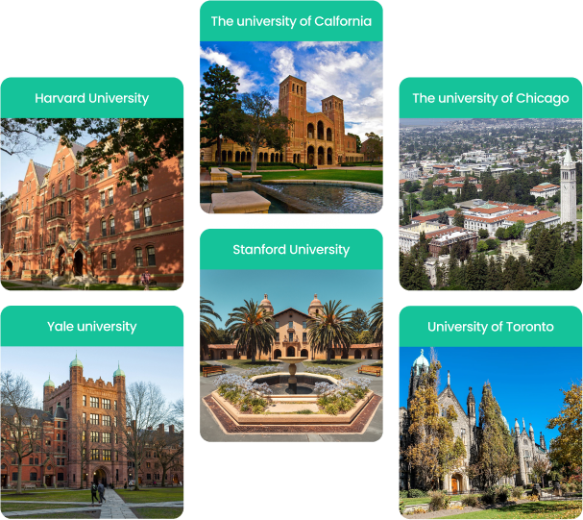Write Right's Visa SOP
Writing Services
Get Easy Visas to Your Dream Destination
with Write Right's Professional
Visa SOP Writing Services
Get Quote View Samples
Here’s Why Students Trust Us
Deadline
Leave your SOPs to us! With 2-day express delivery, you can focus on your university dreams stress-free!
Quality
Our education counselors use their expertise and creativity to conduct rigorous quality checks for impressive content that makes a lasting impression.
Revision
We know that the journey to perfect content is never over. That's why we offer 1 free revision for life - so you can keep striving for greatness!
Customer Support
Whether it's the wee hours of the morning or the dead of night, we've got you covered with 24/7 personalized assistance.
4% time wasted
Researching
10% time wasted
Adding relevant
points
15% time wasted
Structuring &
ideating
3% time wasted
Using the
correct format
5% time wasted
Editing &
proofreading
7% time wasted


Let Write Right help you craft the perfect statement of purpose and increase the chances of your visa acceptance.
Trusted By many University







Serving Global Universities at 90% acceptance rate

Get personalized and guided services for students and working professionals under one roof with a fixed TAT of 2 days and no extra charges. We create SOPs that fit individual needs using the profile, universities, courses, faculty, and exam scores. Quality check by education counselors, 1 free revision anytime with an above 90% acceptance rate, no hidden charges, express deliveries, and over 2000 positive customer reviews.
Get a free quote See samples
Our work speaks it all

Statement of Purpose
SOP for Canada Visa
A statement of purpose (SOP) is a written statement that describes your identity and your work. It is a reflection See more..
View Sample
Statement of Purpose
SOP for USA Visa
Studying computer science in USA offers tremendous opportunities to amplify your career growth in. See more..
View Sample
Statement of Purpose
SOP for UK Visa
We have a list of SOP samples for masters in UK to demonstrate how to craft an effective SOP for masters See more..
View SampleHow we do it
Study the Questionnaire
Experts at Write Right begin by thoroughly studying the client's questionnaire. This helps the team understand the client's content requirements, including their tone, style, and purpose preferences.



Create a personalized draft
Once the requirements are clear, the team creates a personalized content draft. The content is tailored to the client's specific needs and preferences, and the team works closely with the client to ensure their satisfaction.
Conduct quality checks
Before submitting the final content to the client, Write Right conducts thorough quality checks. This includes checking the content for grammar, spelling, punctuation, and overall writing style to be of highest quality standards and error-free.

Services For All Your Needs
Highest rated in
terms of reviews
Recognized as one of the top
Content Writers in the World.


Frequently Asked Questions
Most people conceptualize SOP as restricted to admission into renowned colleges and universities. Besides education, a statement of purpose accommodates a few other perks abroad. SOP for a tourist visa lets you visit a nation temporarily. Similarly, SOP for a spouse visa supports your stay with your spouse living abroad. This showcases the inevitable role of SOP writers in Visa application approval. As the most trusted SOP writer, Write Right crafts a statement of purpose for visa officer approval without hesitation. Thus, hiring us as your professional SOP writer will furnish you with an extensive range of SOP writing Services that fulfill all your Visa application demands.
At Write Right, we offer you a wide diversity of SOP writing. We cater to every demand of our candidates applying for any visa. Not only is SOP writing for a visa, but we also deliver an all-related document that is relevant to your visa application.
A wide variety of visa SOP writing services includes
SOP for student visa
SOP for work visa
SOP for visa application
Visa SOP after refusal
SOP for tourist Visa
SOP for internship
SOP for scholarship
SOP for spouse visa
SOP writing services in most nations are in great demand for their student population. A massive number of students apply every year to study at reputed global universities. Besides, the statement of purpose for the visa is one more criterion for which visa SOP writers are in demand. Write Right helps you in the most crucial stage of the Visa SOP application. Besides, our unique approach is another reason several candidates prefer us as their SOP writing partner.
Write Right is India's first professional writing service for visa SOP writing needs. For a decade, we have been crafting the most quality-driven SOPs that have helped many clients achieve their goals. Visa SOP writers at Write Right draft SOPs per specific country's demands. Leading countries like the USA, Canada, Sweden, France, and the UK have their own SOP formats and tones for visa approval. We indulge all demands of leading nations in our SOP drafting to reduce the refusal rates to zero.
As a leading SOP writing company, we have grasped all the recent immigrant law changes to bring deserving SOP writing. With a success rate of 100%, we offer you SOP Writing for Visa approval for countries like
SOP for Canada visa
VISA SOP for Australia
SOP for UK visa
SOP for USA visa
SOP for New Zealand visa
SOP for Germany visa
SOP for France visa
SOP for Ireland visa
Schengen visa cover letter
In our SOP drafting approach, we follow some questionnaires that aid us in making the best SOP. The questionnaire usually indulges the motive and objectives behind the client's visits abroad. Based on the vision, we create SOPs with demanding writing styles. We also create SOP after understanding the course and surroundings of the nation. As our moral duty, we always try to draft SOPs with a cent percent precision rate. We have never received any complaints regarding quality and uniqueness since our initial days of service. All our SOPs are free of plagiarism and include no grammatical errors. Our process of drafting SOPs starts with the following:
Understanding the profile:
SOP is an exclusive document that contains information about the applicant. Whether the applicant is a student, traveler, or job aspirant, we start SOP drafting only after the profile verification of the candidate. We include all aspects while understanding the profile. It includes early education, schooling, intermediate, graduation, and master studies. Besides the education details, we also focus on the applicant's interests to draft a deserving SOP. Write Right also get detailed data on applicants' accomplishments, recognitions, and other skills that they have achieved.
Research on course and university:
It remains a vital process in drafting an SOP for a student visa. Every Visa officer or SOP evaluator evaluates the SOP based on the applicant's motive to pursue a program or join a university. The motive is what makes an applicant stand out. Thus, we create an SOP based on the applicant's idea and our research. We do deep research about unique and beneficial motives to the university. If there is any problem, we explore campus life via social media to come out with unique motives.
Focusing on engagement and readability:
After accumulating all applicant data, we focus on achieving maximum readability in the SOP. Whether it is SOP for visas or academic needs, a reader always evaluates the SOP to set priority. We develop a great SOP arrangement that enables the reader to find maximum engagement. Besides, creating a readable SOP will also aid the evaluator in understanding why the candidate is the right choice for the visa.
Showcasing future objectives:
Every individual has objectives when visiting a nation for academic purposes or work. Showcasing those future objectives is the duty of an SOP writer. Furthermore, the writer must end the SOP with a great ending statement. What can be better than ending with future objectives? We highlight the applicant's future goals with exact words that attract the reader.
The Statement of Purpose is essential to a student's application (favored by international schools) and a deciding factor in the admission process.
An SOP should not be lengthier than 1000 words, no more than two pages, and should adhere to the same guidelines as essay writing.
Bullets may be utilized, but not in excess.
Times New Roman font size 12 must be used. Avoid becoming too showy.
No. There are no two identical documents. The LOR, or Letter of Recommendation, is expected to be prepared for the students by a recommender, who may be a professor or from their previous workplace. The recommender's input assists university administrators in evaluating the applicant from another person's point of view. SOP, or Statement of Purpose, is a document that the Student prepares to express his desire, objectives, and some necessary details regarding his eligibility for the program.
An ideal SOP includes:
A Good Introduction
Give an overview of yourself and your life aspirations.
Qualifications
Summarize your qualifications, from high school to college, and work experience. Briefly describe all academic and recreational activities.
Source of Inspiration
The motivation and goal of selecting a college. Include any personal occurrences or turning moments that influenced your decision.
Future Objectives
Talk about your upcoming ambitions, what you hope to accomplish, and where you picture yourself after completing this course. Universities require serious candidates, so be as honest as possible.
Regardless of the course, most international universities need an SOP. There are several institutes where SOP is not required.
You can create your SOP if you have sufficient language skills. However, please make sure that it is edited by a professional. Outsource the work if you have only ordinary language skills. The following are the benefits of employing professional writers:
SOP of high quality following industry requirements, boosting the chances of admission.
Writing Professionally
Unrestricted editing
Prompt delivery
SOP is original and free of plagiarism.
It saves time.
It is challenging to choose one of numerous Sop Writing services; however, do your study, and read their reviews and testimonials.
Look for organizations that have experience and a proven track record.
Be familiar with their solutions and the nations in which they specialize.
Read their sample SOPs.
No, because each university has its operating model, different SOPs are required. Their course structures, research methodologies, and faculty are all unique. As a result, their requirements differ.
Follow the stipulated format
Mention your aims, achievements, and future ambitions clearly
Do thorough research on the university
Do not use the same SOP for various colleges
Avoid plagiarism
Be accurate and mention the facts, don't give any incorrect information
Modify it at least two to three times
Seek expert guidance if you don't have linguistic skills